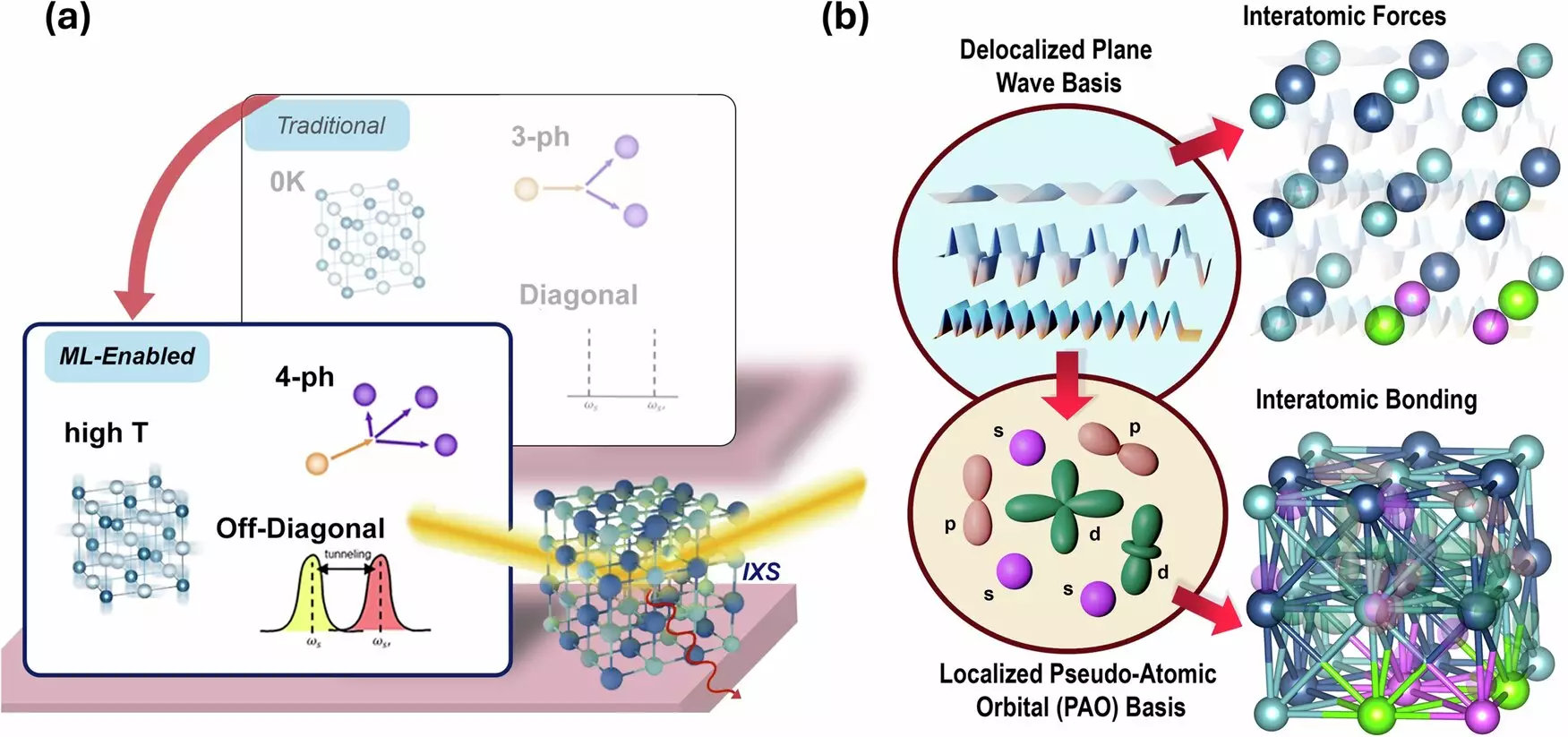In the realm of materials science, few topics spark as much intrigue as the behavior of phase-change materials (PCMs). These unique substances have the capacity to alter their physical properties dramatically when subjected to varying temperature conditions. A prominent example of such materials is germanium telluride (GeTe), which has captured the attention of researchers for its potential in thermoelectric energy conversion. Recent findings from a team at Cornell University shine a light on the complex thermal dynamics of GeTe, offering insights into the mechanisms behind its unexpected behavior at elevated temperatures.
A central conundrum in the study of GeTe is the abnormal increase in lattice thermal conductivity as the temperature rises. While previous studies indicated that this phenomena exists, the underlying reasons remained largely elusive. Now, thanks to the collaborative efforts of Zhiting Tian and her team from the Sibley School of Mechanical and Aerospace Engineering, a credible explanation has emerged, contributing significantly to the fundamental understanding of thermal transport within phase-change materials.
To elucidate the intricate changes occurring in GeTe, the researchers utilized a remarkable combination of machine learning algorithms and advanced X-ray scattering techniques. The cornerstone of their investigation was a sophisticated analysis of atomic bonding within the material. The team discovered that, as GeTe undergoes a phase transition from its lower-energy rhombohedral phase to the higher-energy cubic phase, the bonding strength between second-nearest neighbor atoms significantly increases.
Through their meticulous study, they quantified an 8.3% increase in Ge-Ge bond strength and a staggering 103% increase in Te-Te bond strength as the temperature escalated from 693 K to 850 K. This substantiates the hypothesis that the enhanced conductivity observed in heated GeTe is closely connected to the strengthening of these atomic bonds. The integration of machine learning with first-principles calculations provided a theoretical framework that was then corroborated by empirical X-ray measurements.
Tian articulated the challenges traditionally faced in studying temperature relations within materials: “Computationally, it was quite prohibitive to look at temperature effects and to consider higher-order scattering.” However, the advent of machine learning allowed for a more sophisticated analysis of the interactions between atoms, particularly when addressing the complexities introduced by temperature fluctuations and multi-phonon scattering phenomena. This innovative approach not only streamlined the analysis but also provided a comprehensive toolkit for simulating the behaviors of materials at critical phase transitions.
The implications of this research extend far beyond the academic realm. Phase-change materials like GeTe are heralded for their promising applications in optical and electronic devices, including non-volatile memory systems and thermoelectric generators. Unlike conventional semiconductor materials, GeTe offers a safer alternative to lead telluride, which is notorious for its toxicity. This shift carries considerable importance, especially in the drive toward sustainable materials in technology.
Additionally, Tian’s findings indicate that other materials, such as tin telluride and tin selenide, exhibit similar increases in thermal conductivity, potentially broadening the scope for future research. Identifying and understanding these parallels can propel advancements in a variety of fields, pushing the boundaries of energy efficiency and material stability.
As the quest to comprehend phase-change materials continues, the work performed by Cornell’s research team paves the way for further exploration into thermal transport phenomena. By revealing the atomic-level changes that enhance lattice thermal conductivity, they not only contribute to theoretical foundations but also set groundwork for practical applications.
The research on germanium telluride exemplifies how advanced computational techniques and collaborative scientific inquiry can unravel the complexities of materials science. As researchers delve deeper into the realm of phase-change materials, the potential for new technologies and sustainable practices emerges, carrying the promise of a greener and more efficient future.


Leave a Reply